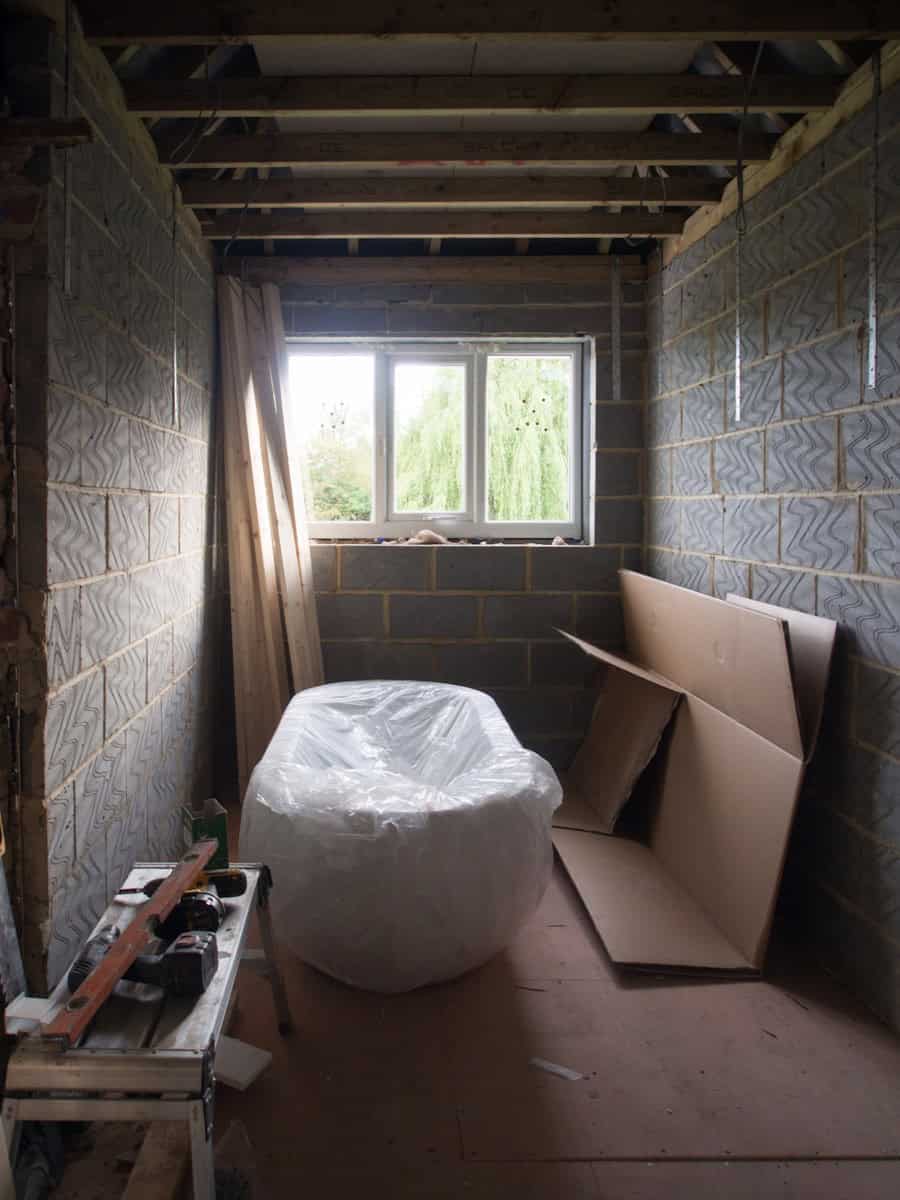Understanding Insulation: More Than Just R-Value
Introduction: What Really Matters for Performance
When people talk about insulation in buildings, they usually focus on one number: the R-value. While a higher R-value is generally better, looking at only this number gives you an incomplete picture of how well your building actually keeps heat in or out. Real insulation performance depends on how well a material handles heat, air movement, and moisture working together.
Good insulation performance means controlling all three ways heat moves: through solid materials (conduction), through air movement (convection), and through invisible heat waves (radiation). A high R-value only tells you about conduction. It doesn’t tell you how well the insulation stops heat loss from air leaks or blocks heat from the sun. To build truly energy-efficient homes and buildings, we need to think beyond just one number.
This guide will help you understand how insulation really works. We’ll explore the basic science of heat movement, learn about different ways to measure performance beyond R-value, see how real-world conditions affect how well insulation works, and compare different types of materials. The goal is to change the question from “what is the R-value?” to “how does this system actually perform?”
How Heat Moves
To understand insulation, you first need to understand what it’s fighting against: heat transfer. Heat naturally moves from warm areas to cool areas, and it does this in three different ways. Good insulation must handle all three.
Heat Moving Through Solid Materials (Conduction)
Conduction happens when heat moves through direct contact between molecules. When you heat one part of a solid material, its molecules vibrate faster and bump into their neighbors, passing the energy along. This is why a metal spoon gets hot when you leave it in a cup of hot coffee.
In buildings, conduction is how heat moves through solid parts like wood studs, drywall, exterior sheathing, and the insulation itself. We measure how well materials resist this with something called thermal conductivity, or k-value. Materials with low conductivity, like the trapped air in insulation, are poor heat conductors and therefore good insulators.
Heat Moving Through Air Movement (Convection)
Convection is heat transfer through moving fluids, which in buildings mainly means air and moisture. When air gets heated, it becomes lighter and rises, while cooler, heavier air sinks down to replace it. This creates a loop that actively carries heat around.
This is often the biggest source of energy loss in buildings. Air leaking through unsealed gaps, cracks, and holes in walls and roofs lets heated indoor air escape and outside air come in. Even inside a wall, poorly installed insulation that has air gaps can create small air loops that carry heat from the warm side to the cold side, going around the insulation and making it much less effective.
Heat Moving as Invisible Waves (Radiation)
Radiation is heat transfer through electromagnetic waves that you can’t see. Unlike conduction and convection, radiation doesn’t need air or any other material to travel through – it can move through empty space. This is how the sun warms the Earth and how you feel heat from a campfire even when you’re standing far away.
All materials that aren’t at absolute zero temperature give off, absorb, and reflect heat radiation. In buildings, dark roofs absorb heat from the sun, warming up the attic. In winter, warm interior surfaces radiate heat toward cold exterior walls and windows. Some materials, like foil-faced insulation boards, are specially designed to reflect this type of heat transfer.
Understanding Performance Numbers
To really understand insulation, we need to learn the language that describes how well it works. Product data sheets include several measurements that describe exactly how a material behaves. Understanding these numbers is essential for making good choices.
R-Value (How Well It Resists Heat Flow)
R-value is the most common measurement and shows how well a material resists heat moving through it by conduction. A higher R-value means better resistance. It’s important to know that R-value depends on thickness – if you double the thickness of insulation, you roughly double its R-value. However, R-value only measures performance against conduction under specific lab conditions. It doesn’t account for air leakage or radiation.
U-Value (How Fast Heat Moves Through)
U-value is the opposite of R-value (U = 1/R). It measures how fast heat moves through an entire building part, like a complete wall or window. For this reason, a lower U-value is better because it means slower heat loss or gain. U-value is more useful for things like windows and doors because it accounts for how all the parts work together, not just one material.
K-Value (The Material’s Natural Heat Resistance)
K-value is a property of the material itself, regardless of how thick it is. It measures how fast heat passes through a specific amount of material (like a one-inch-thick, one-square-foot piece). A lower k-value means a better insulator. This measurement is useful for directly comparing different materials. For example, copper has a k-value around 2700, while high-performance foam insulation has a k-value around 0.20. This huge difference shows why continuous insulation is so important.
Air Permeability (How Much Air Gets Through)
Air permeability measures how much air passes through a material under a specific pressure difference. A lower number means the material is better at stopping air leaks. This directly shows how well a material can prevent heat loss from air movement. Materials like open-cell spray foam or unfaced fiberglass let air through, while closed-cell spray foam and most foam boards block air effectively.
| Measurement | What It Shows | Common Unit | Better Value |
| R-Value | Resistance to heat flow through solids | ft²·°F·h/Btu | Más alto |
| U-Value | Rate of heat transfer for whole assembly | Btu/h·ft²·°F | Baja |
| K-Value | Material’s natural heat resistance | Btu·in/h·ft²·°F | Baja |
| Air Permeability | How much air flows through | cfm/ft² @ 75 Pa | Baja |
Why R-Value Alone Isn’t Enough
One of the most important ideas in building science is the difference between the R-value printed on the package and what you actually get in a real building. The printed R-value is tested in a lab under perfect conditions. The real-world R-value is what the entire wall or roof actually achieves when it includes studs, gaps, and fasteners. In practice, the real-world R-value is almost always much lower than the printed value.
This difference happens because of several real-world factors that don’t show up in lab tests. Using tools like infrared cameras and air leakage tests, these performance problems become obvious. An infrared image can instantly show the cold stripes where heat is escaping, while air leakage tests can measure total air leaks, often showing it’s like leaving a window open all year.
Thermal Bridging: Heat Highways
Thermal bridging happens when materials that conduct heat well create an easy path for heat to travel through an insulated wall. Wood or steel studs, concrete edges, and metal fasteners have much lower R-values than the insulation between them. These parts act like “highways” for heat, going around the insulation and creating cold spots on interior surfaces in winter. A standard wood-framed wall can lose over 20% of its printed R-value just because of the framing.
Air Leaks and Heat Loss
Air leakage is the biggest threat to insulation performance. A small gap or crack can let a lot of air move through the building envelope, carrying large amounts of heat with it. This completely cancels out the R-value of insulation in the path of the airflow. This is why sealing air leaks isn’t optional – it’s essential for good performance. Insulation materials that let air through, like fiberglass batts, are especially vulnerable. If they’re not installed in a perfectly sealed space, their real-world performance drops dramatically.

Moisture and Compression Problems
Many types of insulation lose performance when they get wet or compressed. When fibrous insulation like fiberglass or cellulose gets damp, water replaces the trapped air that gives the material its insulating power. Since water conducts heat much better than air, the R-value drops significantly. Also, compressing batt insulation to fit into a space that’s too shallow reduces its thickness and R-value. Compressed R-21 insulation may only perform at R-18 or less.
| Component / Factor | Printed R-Value | Real-World R-Value | Performance Loss |
| Insulation Only (Lab) | R-20 | R-20 | 0% |
| + Wood Framing (2×6 @ 16″ spacing) | R-20 | R-15.8 (approx.) | ~21% |
| + Minor Air Leaks | R-20 | R-12 to R-14 (approx.) | 30-40% |
| + Moisture (in fibrous insulation) | R-20 | Can drop to R-10 or lower | >50% |
Comparing Different Types of Insulation
Choosing the right insulation requires looking at much more than just R-value per inch. The best material for a specific job depends on how well it controls all types of heat transfer, manages moisture, seals air leaks, and meets other requirements like fire resistance. Most materials are rated for fire safety, with Class A being the best rating.
Fibrous Insulation
This category includes materials like fiberglass, mineral wool, and cellulose. They work by trapping pockets of still air within fibers to resist heat transfer.
- Fiberglass: The most common and affordable option. It doesn’t burn but lets air through easily and loses R-value when wet or compressed. It needs a separate, carefully installed air and vapor barrier to work well.
- Mineral Wool: Denser and stiffer than fiberglass, with slightly higher R-values (R-4.0 to R-4.3 per inch). Its main advantages are better fire resistance and moisture resistance (it repels water). It still lets air through and needs a separate air barrier.
- Cellulose: Made from recycled paper treated with fire retardants. It can be blown in loose or packed tightly. Dense packing can reduce air movement significantly, but the material absorbs moisture, so controlling water vapor is essential.
Foam Board Insulation
Rigid foam boards are valued for their high R-value and structural strength. They’re typically made from expanded polystyrene (EPS), extruded polystyrene (XPS), or polyisocyanurate (Polyiso).
- XPS and Polyiso: These are closed-cell foams, meaning they resist moisture well and work as effective air and vapor barriers. Polyiso offers one of the highest R-values per inch (R-6.0 to R-6.5) but can lose performance in very cold weather. XPS (R-5.0 per inch) has historically used chemicals with high global warming potential, though newer versions are improving. Both are excellent for continuous exterior insulation to prevent thermal bridging.
- EPS: Usually has a lower R-value per inch than XPS or Polyiso but lets more water vapor through, which can be helpful in some wall designs. It’s also generally the most affordable foam board option.
Spray Foam Insulation
Spray Polyurethane Foam (SPF) is applied on-site as a liquid that expands to fill spaces, creating an excellent seal against air leaks. This makes it very effective at preventing heat loss from air movement.
- Closed-Cell SPF: This dense foam has a very high R-value (R-6.0 to R-7.0 per inch) and works as insulation, air barrier, and vapor barrier all in one. Its stiffness can also add structural strength. It’s an excellent but expensive choice when performance is most important.
- Open-Cell SPF: This lighter, softer foam has a lower R-value (R-3.5 to R-4.0 per inch). It’s an excellent air barrier but lets water vapor through, similar to fibrous insulation. It also provides better sound control than closed-cell foam but will absorb water if exposed to moisture.
| Material | Primary Heat Control | Typical R-Value/inch | Air Barrier? | Vapor Barrier? | Moisture Resistance |
| Fiberglass Batt | Conduction/Convection | R-3.1 – R-4.3 | No | No (needs separate) | Poor (loses R-value) |
| Mineral Wool | Conduction/Convection | R-4.0 – R-4.3 | No | No (needs separate) | Good (repels water) |
| Closed-Cell SPF | Conduction/Convection | R-6.0 – R-7.0 | Sí | Sí | Excelente |
| Open-Cell SPF | Conduction/Convection | R-3.5 – R-4.0 | Sí | No | Poor (absorbs water) |
| XPS Foam Board | Conduction | R-5.0 | Sí | Yes (semi-impermeable) | Excelente |
| Polyiso Foam B. | Conduction | R-6.0 – R-6.5 | Yes (faced) | Yes (faced) | Excellent (faced) |
Advanced Concepts and Testing
For professionals working on high-performance buildings, the analysis goes even deeper into how systems behave over time. These advanced concepts are essential for predicting long-term durability and optimizing performance in complex climates and building types.
Dynamic Performance and Thermal Mass
Static R-value and U-value don’t capture the effects of thermal mass. Materials with high thermal mass, like concrete, brick, or stone, can absorb, store, and slowly release large amounts of heat energy. This “thermal flywheel” effect can moderate indoor temperature swings, reducing peak heating and cooling loads. In some climates, a heavy wall with moderate R-value can outperform a lightweight, high-R-value wall in terms of overall energy use and comfort.
Heat and Moisture Analysis
Hygrothermal modeling is an advanced simulation process that analyzes how heat and moisture move through a building assembly over time. Using software like WUFI®, professionals can test a virtual wall or roof design against years of weather data to predict its long-term performance. This analysis is critical for preventing moisture buildup within assemblies, which can lead to mold, rot, and structural failure.

Standardized Testing Methods
The performance measurements we rely on are defined by rigorous, standardized test methods developed by organizations like ASTM International. Key standards include:
- ASTM C518: The Standard Test Method for Steady-State Thermal Transmission Properties, used to determine the k-value and R-value of materials.
- ASTM E283: The Standard Test Method for Determining Rate of Air Leakage Through Exterior Windows, Curtain Walls, and Doors. A similar approach is used in ASTM E2178 for air barrier materials.
Conclusion: Looking at the Whole Picture
True insulation performance is complex and cannot be captured by a single number. It results from a complete system strategy that effectively manages conduction, convection, and radiation. The R-value of a material is just a starting point for analysis, not the final answer about performance.
Our exploration has shown that real-world factors – thermal bridging, air leakage, and moisture – are not minor details but major forces that can drastically reduce the lab-tested value of an insulation product. Selecting insulation should be a careful process based on a complete technical analysis of its properties: its resistance to heat flow through solids (R-value), its ability to stop airflow (air permeability), its strategy for managing water vapor (vapor permeability), and how it reacts to moisture.
Ultimately, designing and building a high-performance building envelope is about creating a complete, integrated system. It requires a deep understanding of these technical principles to select the right materials and, just as importantly, to ensure they are detailed and installed correctly. Only then can we create buildings that are truly effective, durable, and efficient for decades to come.
- https://www.energystar.gov/ ENERGY STAR – Recommended Home Insulation R-Values
- https://www.energy.gov/energysaver/insulation U.S. Department of Energy – Insulation Guide
- https://www.astm.org/ ASTM International – Thermal Insulation Testing Standards
- https://en.wikipedia.org/wiki/R-value_(insulation) Wikipedia – R-value (Insulation)
- https://www.ashrae.org/ ASHRAE – Building Thermal Envelope Standards
- https://codes.iccsafe.org/ ICC – International Energy Conservation Code (IECC)
- https://www.homedepot.com/ Home Depot – All About Insulation R-Values
- https://www.sciencedirect.com/ ScienceDirect – Thermal Insulation Research
- https://insulation.org/ National Insulation Association (NIA)
- https://www.researchgate.net/ ResearchGate – Building Envelope and Insulation Papers





